|
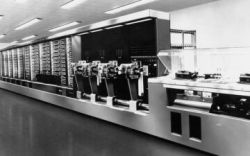
1943
The first
program-controlled computer,
Harvard's Mark I, is built by Howard H. Aiken and his team at Harvard
University. The machine is 51 feet long, weighs 5 tons, and has 750,000
parts.
1945
 The first
computer bug, a moth, is found inside the Harvard’s Mark II
while it was being tested. Researchers told colleagues they had
"debugged" the machine, which lead to the concept of "debugging a computer
program." The first
computer bug, a moth, is found inside the Harvard’s Mark II
while it was being tested. Researchers told colleagues they had
"debugged" the machine, which lead to the concept of "debugging a computer
program."
---
(Click
image for full picture)
1946
The first
general-purpose electronic computer,
the ENIAC, is completed at the Ballistic Research Laboratory, by John W.
Mauchly and J. Presper Eckert. It weighs 30 tons and can do 100,000
calculations per second.
1947
The first
transistor, a solid-state
amplifier made of germanium, plastic and gold, is invented by Walter
Brattain and John Bardeen in a series of experiments conducted between
November 17 and December 23.
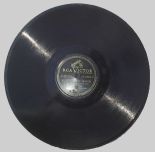
1948
The
33-rpm record is invented.
1949
The
45-rpm record is invented.
The
first stored-program
computer, the EDSAC, is built.
Quote of the Year: “Where a calculator on
the ENIAC is equipped with 19,000 vacuum tubes and weighs 30 tons,
computers in the future may only have 1,000 vacuum tubes and perhaps weigh
only 1.5 tons.”
–Popular Mechanics, March, 1949
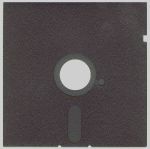
1950
The
floppy disk is invented by
Doctor Yoshiro Nakamatsu, at the Imperial University in Tokyo. The sales
license for the disk is granted to IBM.
1951
The first
commercial computer, UNIVAC-1, is sold commercially. The
computer is designed by J. Presper Eckert and John Mauchly, and is able to
process both numeric and textual information.
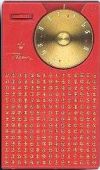
1955
The first
mass-produced transistor radio
is launched by Sony (at the time
called “Tokyo Tsushin Kogyo LTD.”).
1956
The first
hard drive, IBM’s RAMAC 305,
is introduced, consisting of 50 twenty-four inch diameter platters with a
total storage capacity of 5 MB.
1958
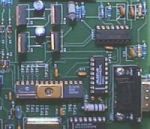 The
integrated circuit is separately and simultaneously invented by
Jack Kilby at Texas Instruments and Robert Noyce at Fairchild
Semiconductor. This enables a circuit consisting of capacitors, resistors
and transistors to be fashioned out of a single crystal. The
integrated circuit is separately and simultaneously invented by
Jack Kilby at Texas Instruments and Robert Noyce at Fairchild
Semiconductor. This enables a circuit consisting of capacitors, resistors
and transistors to be fashioned out of a single crystal.
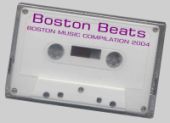
1962
The
compact cassette tape is
introduced by Phillips Company of the Netherlands.
1963
The
ASCII code is developed by
Robert W. Bemer of American National Standards Institute. The code
assigns standard numerical values to all characters on the keyboard,
enabling computers that have otherwise nothing in common to communicate
with one another.
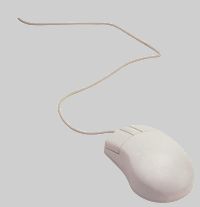
1964
The
computer mouse is invented by
Douglas Engelbart. The device is not widely used until it is adopted by
Apple Computers in 1983 and by IBM in 1987.
1965
The digital compact disc is
invented by American physicist James T. Russell. The system records and
replays sound using light. (The spelling of “disc” with a “c” is chosen
and included in the patent. “Floppy disk” and “hard disk” are spelt with
a “k.”)
The
eight-track tape is introduced
as an option on certain Ford and Mercury luxury cars. Developed in
conjunction with Motorola and RCA-Victor records, eight-track tapes become
the first successful form of tape-based recorded music, until their
discontinuation in the early 1980’s.
1969
The genesis
of what will become the Internet
is born when the Advanced Research Projects Agency (ARPA) in the U.S.
Dept. of Defense awards Bolt, Beranek, and Newman Inc. (BBN) a contract to
develop the backbone of packet switches for ARPAnet. The system
had four main hubs: the Universities of California in Santa Barbara and
Los Angeles, the University of Utah, and SRI International. A researcher
is now able to sit at a computer in one of these hubs and download data
from computers at any of the other hubs.
1972
The first
email program is created by
Ray Tomlinson of BBN. The @ sign was chosen to mean "at" in the address.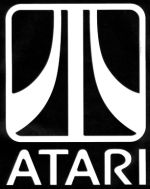
HBO invents pay-TV service for
cable.
Atari is founded (as Syzygy) by
Nolan Bushnell, who also designed “Pong.”
1973
FTP, or File Transfer Protocol,
is developed for ARPAnet. FTP is still used to send and retrieve files
across the Internet.
Ethernet is designed by Bob
Metcalfe. The system describes the set of rules by which computers on
local area networks send and receive information to one another.
1974
The
protocol later to be called TCP/IP
(Transmission Control Program/Internet Protocol) is outlined by
Robert Kahn of DARPA and Vinton Cerf of Stanford in a paper called “A
Protocol for Packet Network Interconnection.” The paper is also the first
use of the term “Internet”
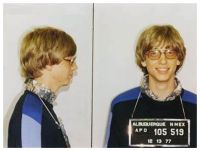
1975
Microsoft is founded by Bill
Gates and Paul Allen on April 4, 1975.
The
Betamax video recorder is
introduced by Sony.
The
term "personal computer" is
coined Ed Roberts to describe an early personal computer called the
Altair.
1976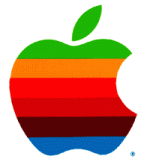
The
VHS format VCR is introduced by
JVC to consumers in Japan for $885.
Apple Computer is created
Steven Jobs and Steven Wozniak on April 1, 1976 in a California garage.
1977
Quote of the Year: "There is
no reason anyone would want
a computer in their home."
--Ken Olson, President, Chairman and Founder,
of Digital Equipment Corp.
1978
The
Laserdisc is developed by
Pioneer. They were first used by General Motors to train Cadillac
salesmen, and not sold for home use until 1980.
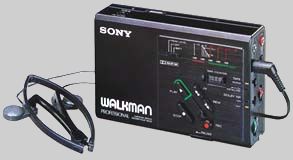
1979
Sony Walkman portable audio
cassette player is introduced by Sony.
1980
A
global standard for CDs is
proposed by Sony and Philips.
1981
The first
IBM PC is sold
DOS (Disc Operating System)
is created by Microsoft.
The first
laptop computers are sold to
public.
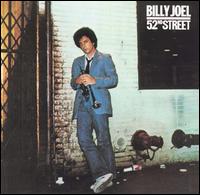
1982
The first
commercial CD, Billy Joel's
52nd Street, is released by Sony Music.
Sun Microsystems is founded.
1983
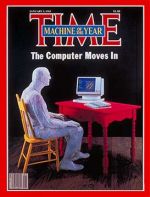 First
cellular phone network is
started in the United States. First
cellular phone network is
started in the United States.
The
computer
is named "Man of the Year"
by Time Magazine.
NEXT SECTION
GO TO:
Introduction
PART
I: The Dark Ages: When Time Stood Still
PART
II: Dawn of the Computer Age
PART
III: Dawn of the Internet
PART
IV: The Rise of (and Battle Over) the MP3
PART
V: Life After Napster
|